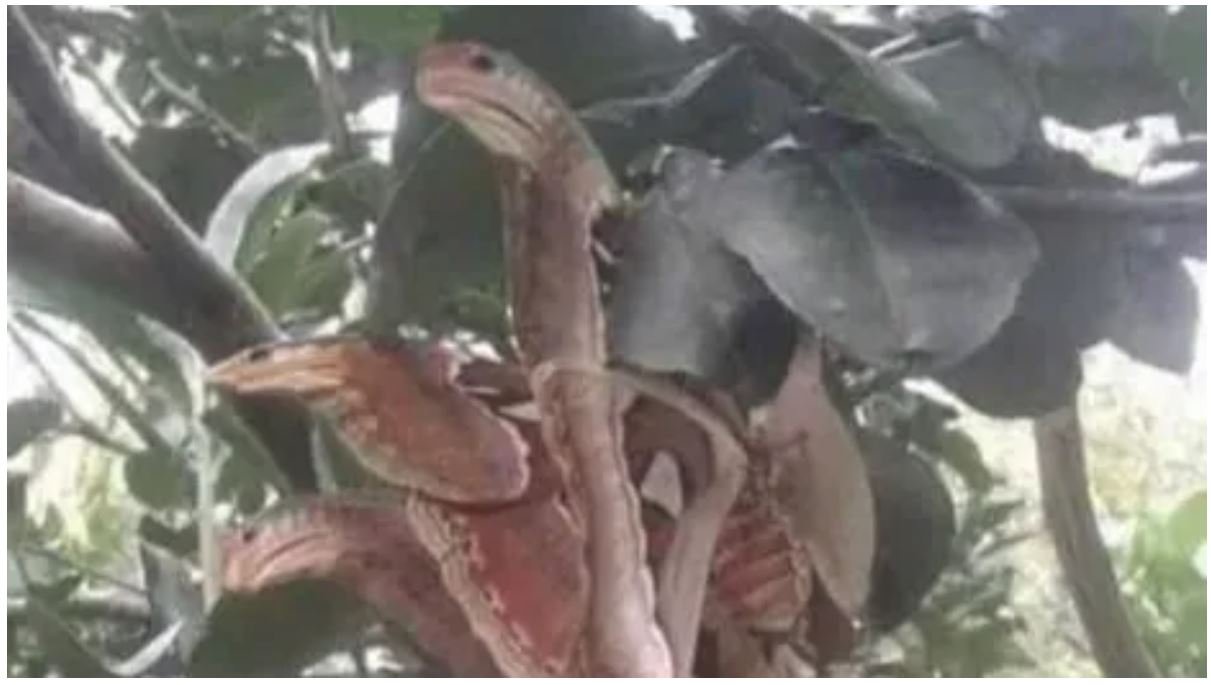The wild world on Earth is home to a lot of fascinating and interesting animals. Seeing how different organisms work together to adapt to their surroundings and stay alive, all while keeping the ecosystem in a delicate balance, is nothing short of amazing.
So, I shouldn’t have been surprised when I came across pictures of three “furious serpents” that looked like they were hiding in a tree. Even better, I’m not the only one who can’t resist the charm of these amazing photos.
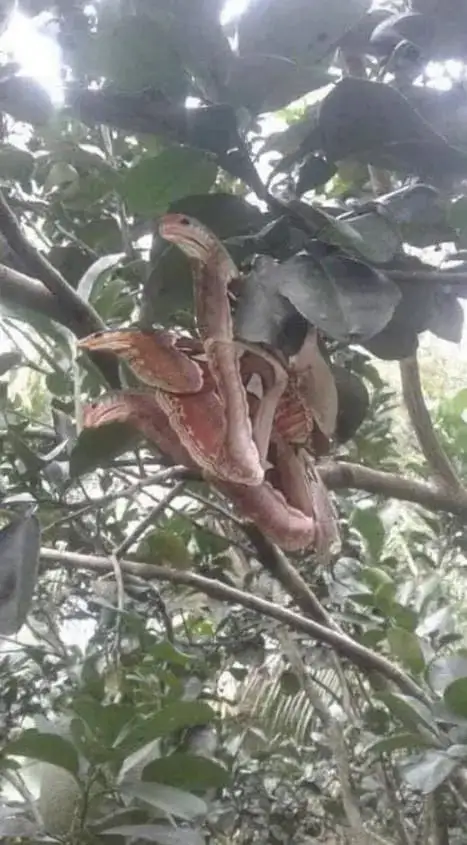
When you see three snakes tangled up in a tree, it’s enough to make your spine tingle. Even a single snake in this kind of place can make you feel uneasy. But even though these pictures look like snakes, they don’t show any. Instead, they show something completely different.
Biodiversity is the way the natural world is made up of a lot of different species in a lot of different numbers. Each species has a unique role in its surroundings, and over the course of evolution, many animals and plants have developed amazing adaptations and ways to stay alive.
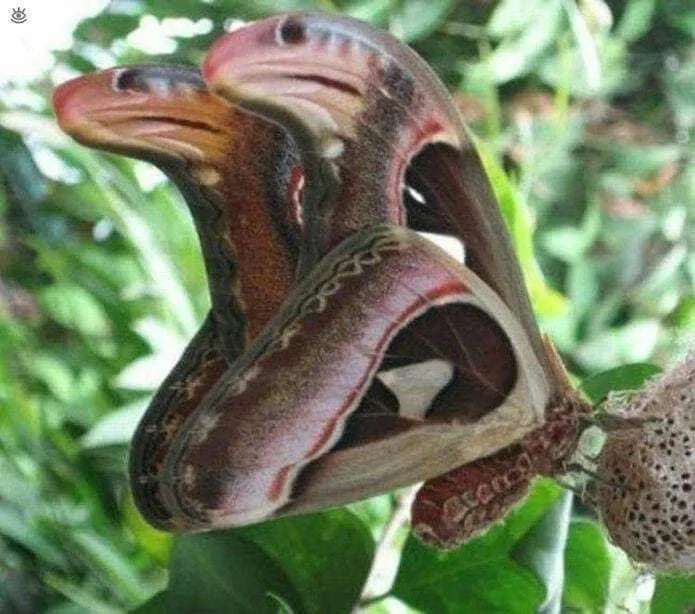
Take, for example, insects that have changed their colours to look like their surroundings. This helps them hide from animals that might want to eat them. On the other hand, some insects have made poisons as a way to protect themselves from danger.
The fact that pictures of three angry-looking “snakes” started making the rounds online only served to highlight this basic truth.
In 2021, Rob Allam posted a strange picture on Twitter that at first looked like it showed three angry “serpents” hiding in a tree. But users quickly realized that the truth was much more complicated than it seemed at first.

In reality, the group of “snakes” is just parts of the wings of two different species of Atlas moths put together to make a fascinating optical illusion. This amazing moth species lives in the jungles of Asia and has the strange ability to look like a snake.
The impressive wingspan of the Atlas moth, which can reach up to 24 cm (9.4 inches) and covers more than 160 cm2 (25 square inches), makes it one of the biggest species of Lepidoptera. When you compare the size of its body to the size of its wings, you can see that the body is much smaller.
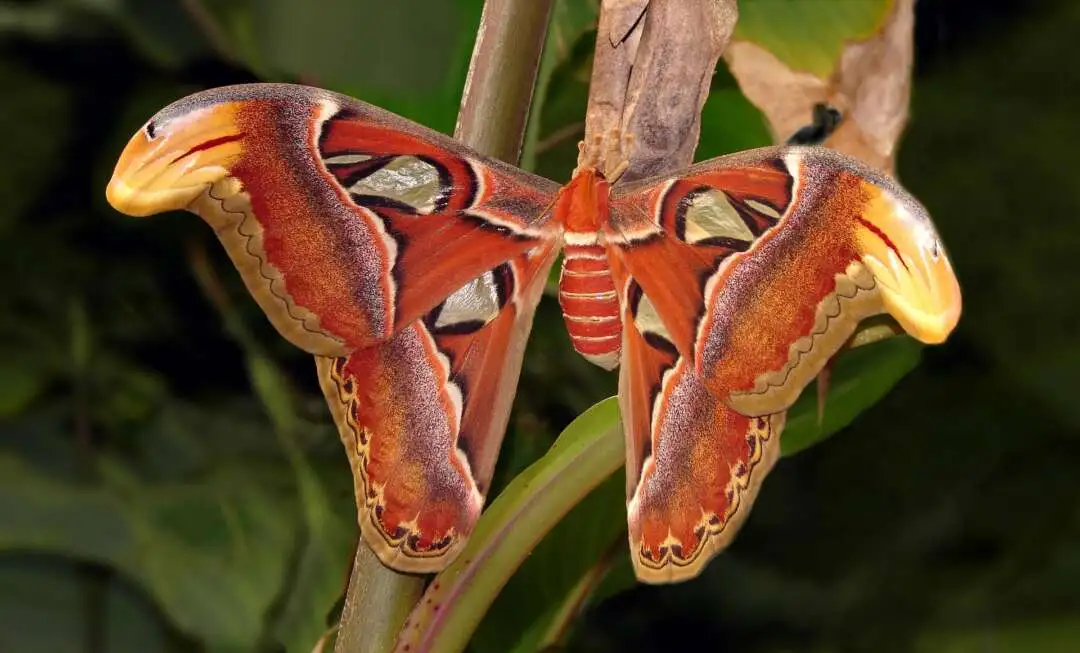
Carl Linnaeus first wrote about this huge insect in 1758. It is one of the biggest animals on Earth. It gets its name from the Greek Titan Atlas, which is a reference to how big it is.
Rob, a Twitter user, shared the picture and explained it like this: “Attacus Atlas, one of the largest butterflies in the world, only lives for two weeks as an adult. During this time, its main job is to look like a snake so it can lay eggs and protect them until they hatch.
At first, a lot of people on social media had trouble understanding that the thing in question was, in fact, a moth. One user was amazed and said, “The camouflage is very impressive.” One person was shocked and asked, “How is the one on top, not a real snake? If this moth didn’t look like something I’d swat away, it would live longer.”
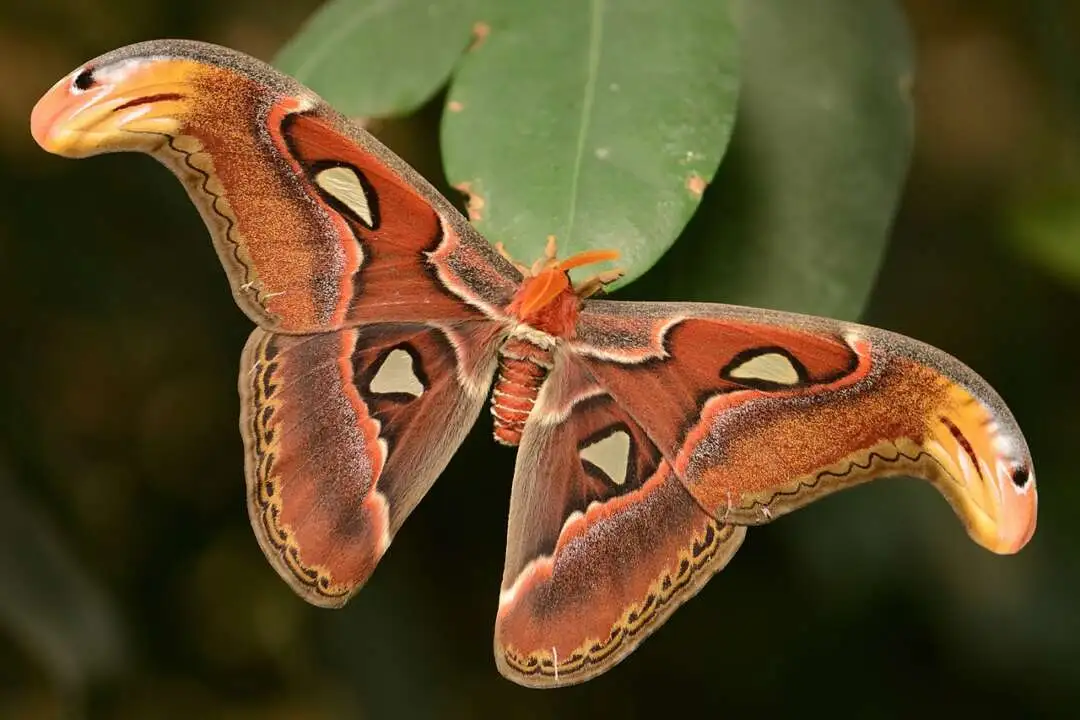
In spite of what most people think, Atlas moths are not good or stable flyers. Because they need to save energy, they prefer to sleep during the day and fly at night. This is a pretty unique way to stay alive. The National History Museum says that when the Atlas moth senses danger, it drops to the ground, wiggles, and flutters its wings to look like a snake’s head.
If you really want to feel the allure of the Atlas moth, you probably need to go to the tropical jungles of Asia. But Atlas moths have been spotted in places other than Europe and the United States.

In 2012, the BBC told a fascinating story about a huge Atlas moth that was found on a wall in Ramsbottom, Greater Manchester. The moth was so unusually big that the family thought it was a bat at first. This one-of-a-kind species may have gotten out of a private collection, but it died soon after being found.
In July 2022, a picture of another Atlas moth was taken in Bellevue, Washington. This was an important event. This was the first time this species was seen in the United States that was recorded. Also, in that same year, a second Atlas moth was seen in Sweden.
The entomologist in charge of the state Agriculture Department, Sven Spichiger, said, “This is a truly amazing bug, something so big that it makes you feel awed. He also said, “Even if you don’t like bugs, this is the kind that makes people pull out their phones and take a picture because it’s so beautiful to look at.”
If I saw this beautiful species, I would be filled with awe and wonder. I would automatically grab my camera and take a picture of the scene to make sure I would always remember it. But if I saw that it was starting to look like a snake’s head, I would be careful and keep a safe distance.
